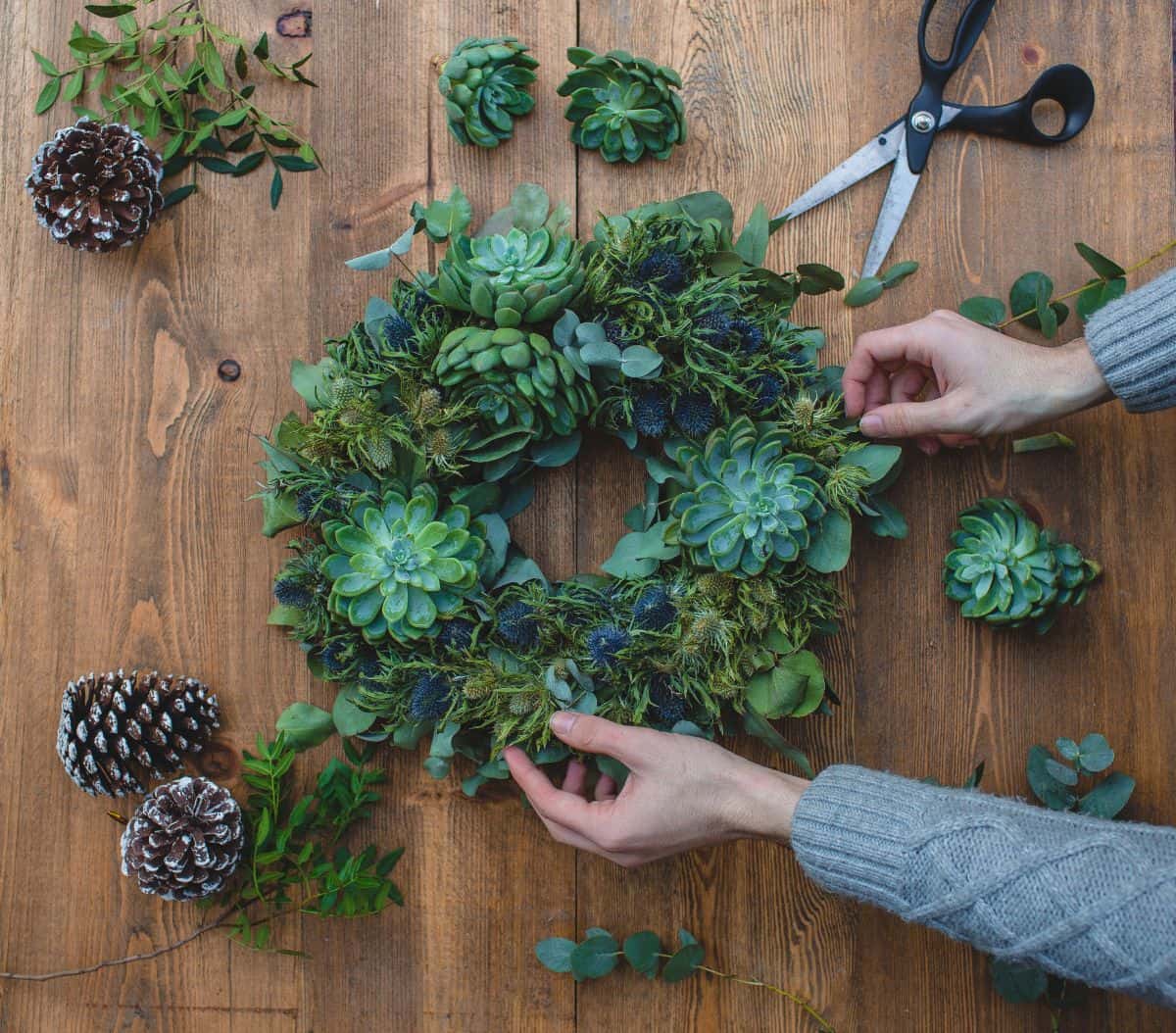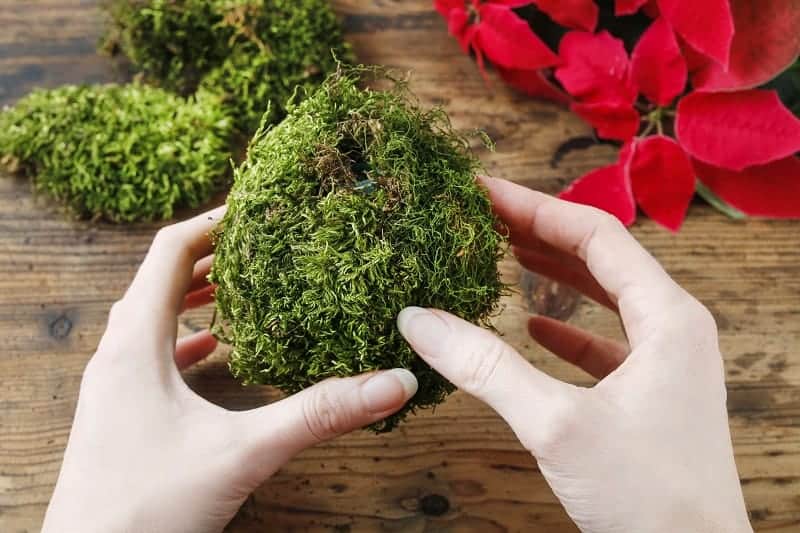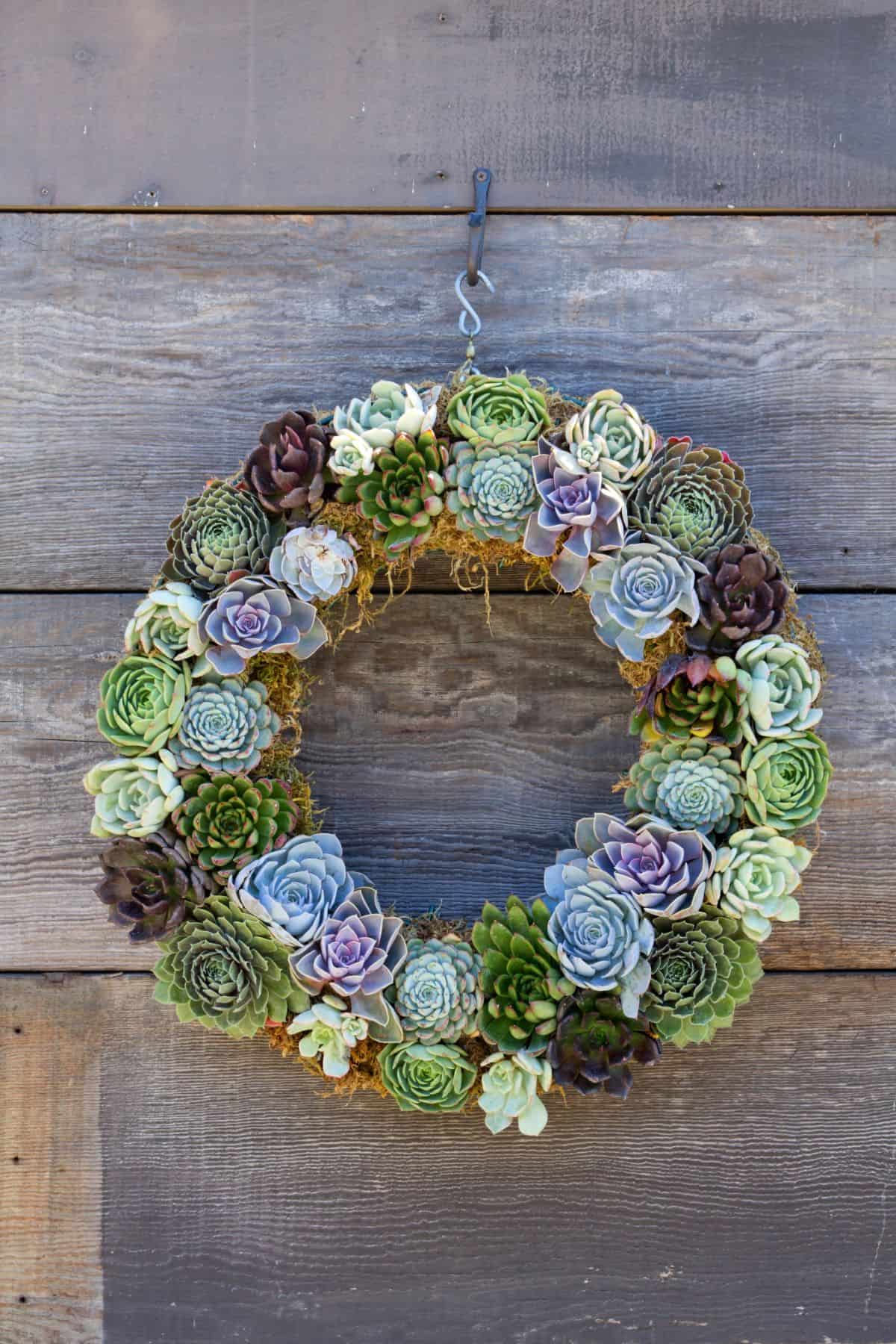Succulent wreaths are a simple and unique way to display your succulent collection. They’re also a great excuse to buy more succulents, even if you’re running out of the room. What better way to expand your collection than to decorate your walls? Succulent wreaths also make great gifts, especially if you’re looking for a way to share your love of succulents. Whether you’re an expert crafter or are new to DIY, succulent wreaths are perfect for exercising your creativity.

Related Article: How to Plant a Succulent Garden
Supplies
Obviously, you’ll need a variety of succulent cuttings for this project. Consider using succulents of different shapes, sizes, and colors to create a unique and interesting living work of art. It can be helpful to choose succulents that have similar care needs to ensure that every plant receives the right amount of light and water, but don’t be afraid to get creative.
Since most succulents are slow-growing, you’ll have plenty of species to choose from. Echeveria, Pachyphytum, and Gasteria are all commonly used in wreaths but don’t be afraid to use a more unusual variety such as Portulacaria afra or Euphorbia tirucalli. Try experimenting with rosette-shaped succulents, trailing succulents, and even cacti. Succulents come in a huge variety of colors, so if you have a certain color palette in mind or are looking to compliment your décor, you should have no trouble finding the perfect plants.

You’ll also need to purchase a mesh-covered sphagnum moss wreath. These can be found at most craft stores and online retailers. Wreath forms come in different sizes, so be sure to consider how many cuttings you have available before buying a large form. You can also make your own out of moss, gardening wire, and a wire wreath frame.
A pointed tool such as a screwdriver, chopstick, or even a pencil will help you with the placement of the cuttings. The tool doesn’t need to be sharp, just pointed enough to poke a small hole in the moss for the stem of the cutting. Floral pins are also a great way to keep everything in place. These can be found at some craft stores or your local florist.
Planning

Before you begin assembling your wreath, it’s important to consider how you will be designing your wreath. Many crafters find it helpful to draw out their design to help them decide where to place each plant. Consider each plant’s shape and size when deciding where it should go. Placing larger or heavier plants on one side may make your wreath lopsided and unstable when hung, so be sure to distribute the weight as evenly as possible.
No products found.
If you have all your cuttings ready to use, you can also lay them out in a rough circle shape to simulate your finished wreath. You’ll be able to get a good idea of what your finished product will look like while still being able to tweak the design and move plants as you please. Of course, you can always design your wreath as you go if you’re more of the impulsive type.
Assembly

Prior to assembly, you’ll need to soak your moss wreath form in water. Soaking the wreath doesn’t really provide your cuttings with any moisture since they don’t have roots, but it will be easier to put them into place than it would with a dry wreath. Soak the form for about 15 minutes or until it’s absorbed as much water as possible. Be careful handling the wet wreath, it’s going to be heavy!
Before placing your cuttings into the wreath, make sure they’ve had enough time to callous to reduce the risk of them rotting. Whether you’ve planned out your wreath or not, you can then begin putting your cuttings into place. Using a pointed tool, such as a screwdriver or pencil, poke holes in the wreath large enough to fit the stem of your cuttings.
You’ll need to decide now whether you plan on hanging your wreath up immediately or waiting for six to eight weeks for root growth. If patience isn’t your thing, you’ll need to secure each cutting with a floral pin to keep it in place. Pins are also helpful with cuttings with short or unusually shaped stems. If you’d rather not use pins, you’ll need to keep your wreath laying flat for the next six to eight weeks in order for the cuttings to take root.
Remember to place the cuttings fairly close together. Since succulents are slow-growing, you won’t need to worry too much about crowding. You want your cuttings to be placed in a way that covers the wreath itself, so close placement is ideal.
Care

Caring for your succulent wreath is simple. Hang your wreath somewhere with plenty of sunshine. Succulent wreaths are great for outdoor spaces if you live in the right climate, but you can always bring it back inside if necessary. If you decide to hang your wreath indoors, place it near a sunny window. Many species of succulent will do fine in low-light environments, but most will look better when allowed access to plenty of light.
You’ll need to follow the same watering schedule you follow with your other succulents and cacti. Remember, the wreath will be pretty heavy after watering, so you may want to wait a day or two after watering before hanging it back up. Be sure to allow the wreath to dry out between watering to help prevent root rot. Root rot can develop quickly if succulents are left in too much moisture and you may not notice until the damage has been done.
Over time, you may notice your wreath losing its shape. As your succulents grow, some may outgrow others, become stretched out, or otherwise change the wreath’s original shape. If you become unhappy with the appearance of your wreath, you can always trim the succulents and replant them as needed. Taking cuttings from the original plants will also them to regrow while also providing you with new cuttings to fill in any empty spaces. Of course, you can also start over if you’re looking for a new project!

You Might Also Like:

